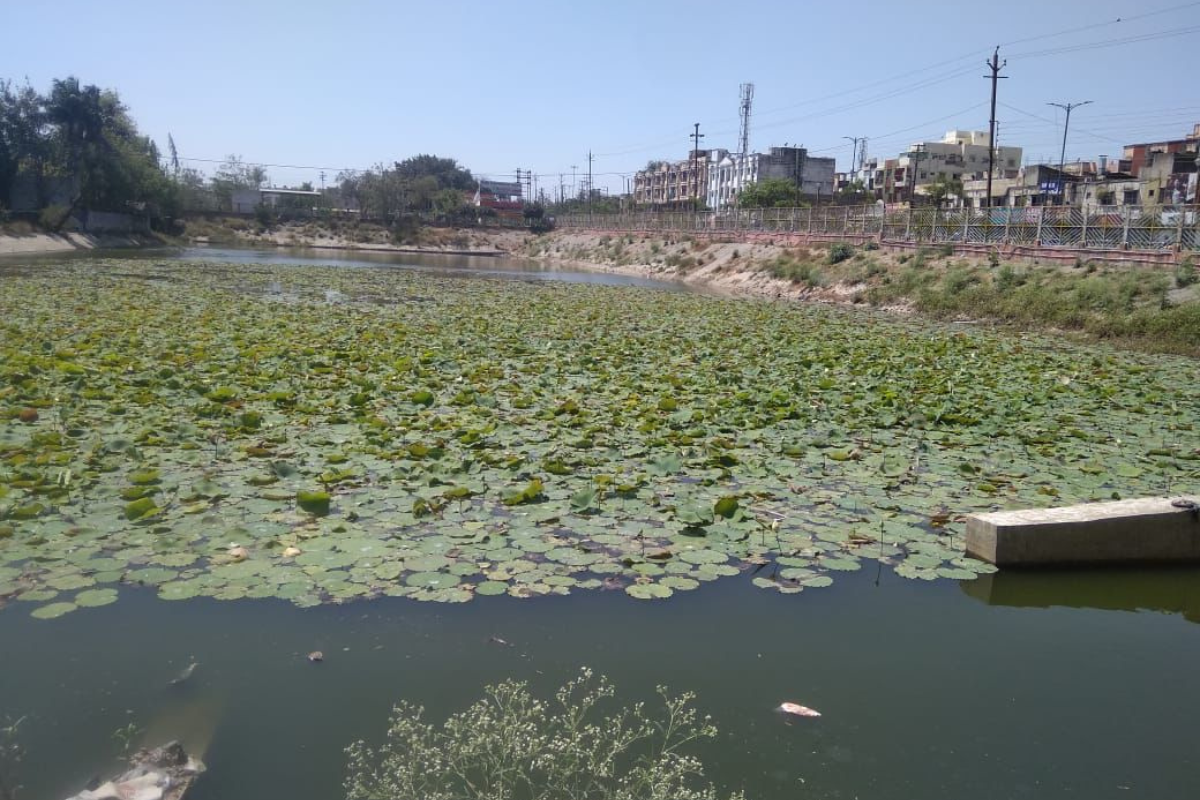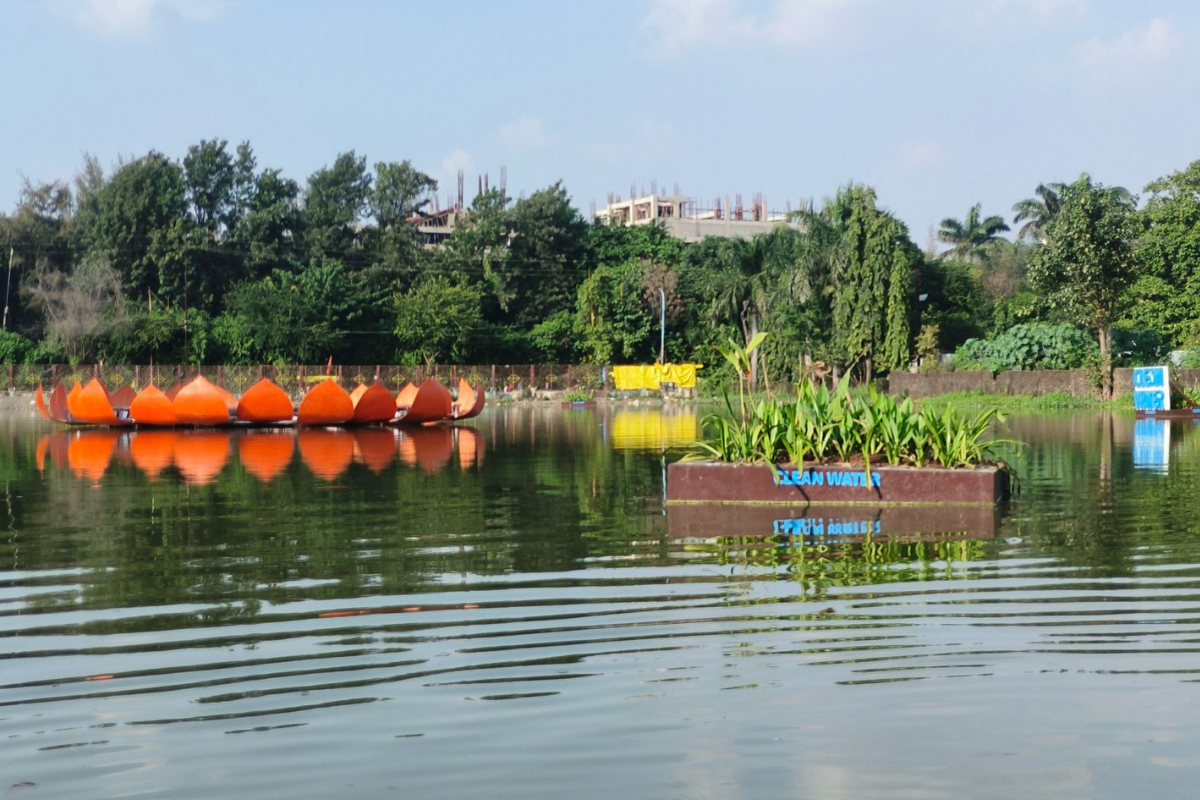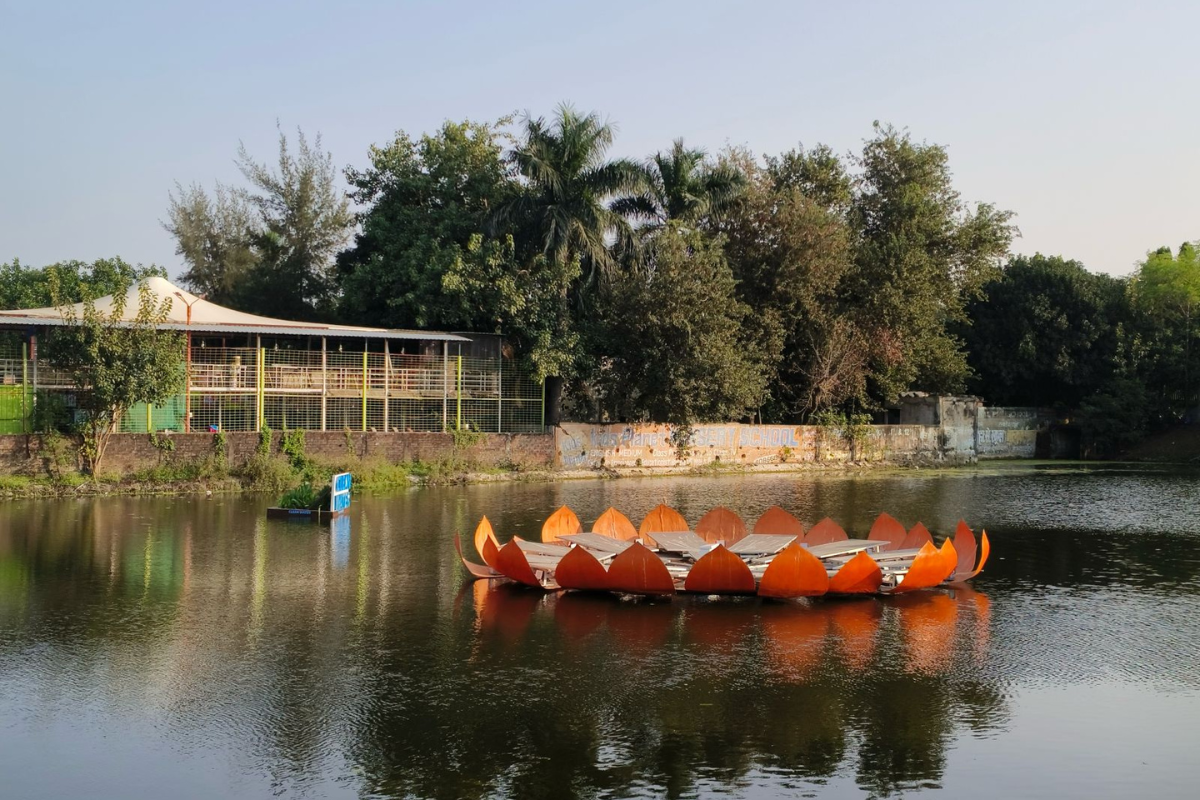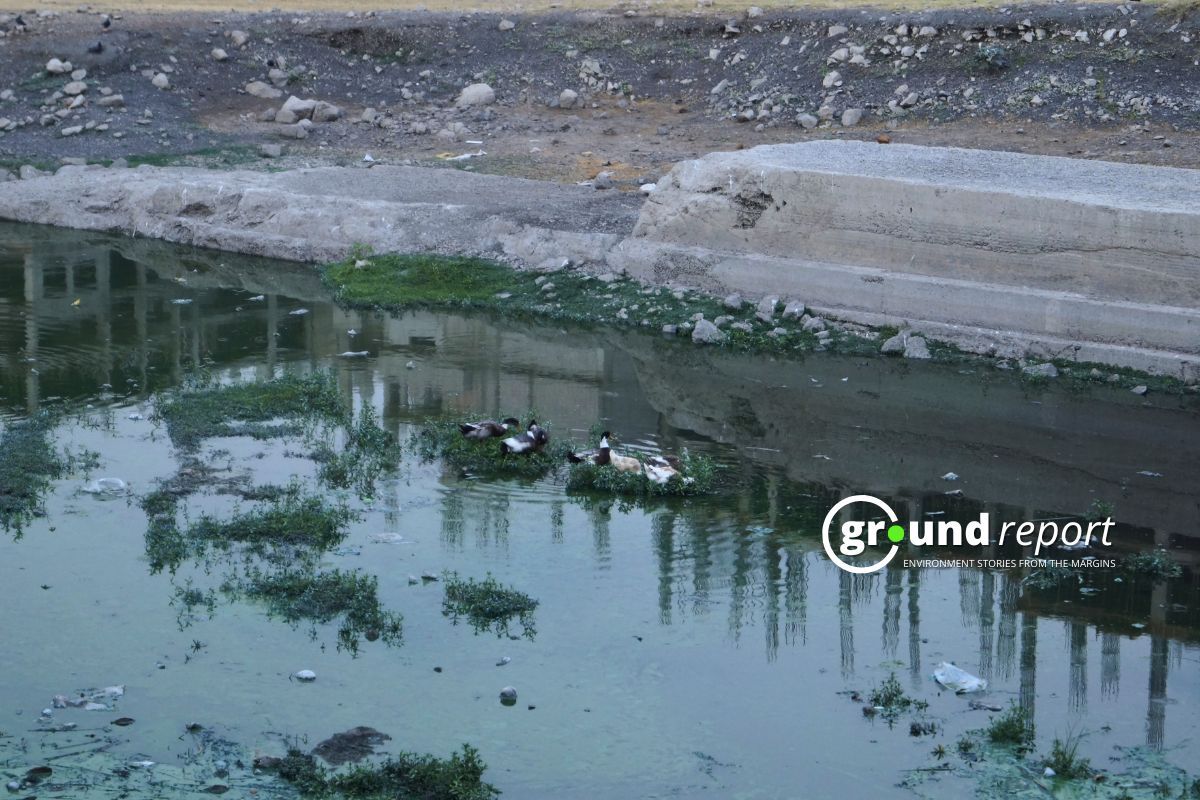Just six kilometres from Indore railway station lies the historic Annapurna Temple, renowned for its cultural significance. Nearby, the one-hectare Annapurna Lake adds a natural charm to the area. However, neglect due to untreated garbage, sewage, and a lack of maintenance led to the lake’s severe degradation, even causing fish deaths. Now, efforts are underway to restore the lake’s health and revive its ecosystem. Here’s a closer look at the transformation journey of Annapurna Lake in Indore
How and why Annapurna Lake got polluted
Clean Water, an environmentally focused startup, employs innovative tools and biological solutions to restore water bodies. Recalling last year’s incident at Annapurna Lake, Priyanshu, the startup’s founder, explained that fish began dying in large numbers. Upon investigation, it was discovered that the lake’s dissolved oxygen (DO) levels had dropped significantly. Normally, a healthy lake maintains a DO level of around 5 mg/l, but in Annapurna Lake, it had plummeted to just 2.3 mg/l, jeopardising aquatic life.

Polluted Annapurna Lake covered with water hyacinth. Image: Clean Water When dissolved oxygen levels in water drop, aquatic organisms like fish begin to die due to insufficient oxygen supply, as seen in Annapurna Lake. This decline was caused by the growth of invasive plants like algae and water hyacinth, which form a dense cover over the water body—a phenomenon known as algal bloom. The cover blocks sunlight, disrupting photosynthesis for submerged plants and phytoplankton, further depleting oxygen levels.
Additionally, decomposing water hyacinths consume available oxygen, increasing biological oxygen demand (BOD) and chemical oxygen demand (COD). This process pollutes the water, making it toxic and unusable.
The water hyacinth then expands rapidly, pulling in nutrients such as nitrate and phosphate, further polluting the lake. This whole process is called eutrophication. In this process, the lack of oxygen in the lake becomes so low that fish and other creatures start dying.
Similarly, in Annapurna Lake, the COD had risen to 68 mg/l and BOD to 20 mg/l—levels harmful to aquatic life. Factors like sewage inflow, garbage dumping, and lack of timely maintenance worsened the lake’s condition, severely impacting its ecological health.
How the lake was cleaned
Priyanshu shares, “Our team began cleaning the Annapurna lake a year ago. The initiative was supported by a ₹38.5 lakh grant from IIT Ropar and Kanpur.”
To clean the Annapurna lake, Priyanshu’s team began by manually removing the water hyacinth and thoroughly cleaning the lake. They then applied a bacteria-based solution developed by Clean Water to inhibit the growth of algae and hyacinth. This organic process uses bacteria to control nutrients like nitrogen and phosphate, which are essential for these plants’ growth. The bacterial dosing prevents eutrophication, improves water quality by reducing COD, and increases dissolved oxygen levels, enhancing the lake’s overall health and ecological balance.
Regular dosing of this bacterial solution is done to keep the cleanliness of the water intact. “This dosing is done with the help of a special dosing drum in the Annapurna lake. About 1 kg of solution is dosed in 1 lakh ml of water,” Priyanshu informs.
Another step involved installing floating wetlands in the lake—special platforms that float on the water and host hundreds of plants like canna and spider lilies. These plants not only enhance the lake’s beauty but also control water pollution and absorb heavy metals from waterbodies through a process called phytoremediation.
They also have a 4-5 inch layer of biomedia like the ones used in STPs to provide enhanced surface area for the growth of beneficial bacteria. Five floating wetlands, each with a lifespan of about 10 years, have been deployed in Annapurna Lake. These wetlands contribute significantly to improving the lake’s ecological health by naturally filtering and purifying the water.

Floating aerators, mechanical devices equipped with 2-horsepower motors, have been installed in Annapurna Lake to release oxygen into the water. This improves dissolved oxygen levels and enhances microbial activity. Currently, five such aerators are operational. Additionally, a lotus-shaped solar aerator, a 1500 kg device powered by solar energy, has been installed, which not only supports aeration but also adds to the aesthetic appeal of the lake. This device increases the oxygen level of the lake during the daytime and illuminates the lake via LED light at night These measures collectively enhance water quality and contribute to maintaining the pond’s ecological balance.

The impact
Following these measures, the water quality of Annapurna Lake has significantly improved. The dissolved oxygen level has risen to 6.7 mg/l, BOD reduced to 2.4 mg/l, and COD to 20 mg/l, with nitrate and phosphate levels now at ‘Below Detection Level.’ Priyanshu shares,
“There was a time when waste from 1,000 households polluted the lake, causing a foul smell. Now, thanks to Clean Water’s efforts, the lake water is clean enough to support aquatic life and even potable water quality.”.
City corporation cooperated
To gain insights into the situation at Annapurna Lake, Ground Report reached out to Indore Municipal Corporation officer Rohit Boyat. He emphasized that the public has been urged to help keep the lake clean, and measures have been implemented to prevent garbage dumping around the lake.
In response to inquiries regarding the maintenance strategy post-rejuvenation of the lake by Clean Water, Boyat confirmed that the Municipal Corporation would assume responsibility for the lake’s maintenance.
“The corporation will continue using the advanced techniques introduced during the restoration to maintain the lake’s cleanliness,” he informs.
Ground Report previously covered the restoration of Piplyahna Lake in Indore, where Clean Water was tasked with the initial cleanup. However, the maintenance responsibility was handed over to the Municipal Corporation after cleaning. During a visit, we found the aerators and floating islands in poor condition due to inadequate maintenance. Priyanshu emphasised that to keep the lake clean, regular upkeep is essential; without it, the situation will revert to its previous state.

He says, “We have been in touch with the Indore Municipal Corporation, which is currently working on raising the height of the boundary wall to discourage littering and installing dustbins in the area. Additionally, we have put up posters to raise awareness about the importance of keeping water bodies clean.”
The Municipal Corporation is running the Lake Restoration Project to rejuvenate water bodies in Indore. As part of this initiative, channels that naturally recharge 27 identified lakes are being cleaned and deepened. Any illegal encroachments on these channels are being removed. Our ground report provides detailed coverage of this project.
Conservation and rejuvenation of lakes have become necessities for a city like Indore. Indore is known for its sanitation standards in the country. The city is facing the challenge of rising water demand and declining groundwater levels. The total installed capacity of surface water sources in Indore is 594 MLD (minimal liquid discharge). Out of this, 540 MLD water is received from the Narmada River, 45 MLD water from Yashwant Sagar, and 9 MLD water from Bilawali Lake.
But in the present situation, due to the low water level of the Narmada River and the low capacity of other surface water sources (dams and tanks), Indore City gets only 397 MLD of water out of 594 MLD. The municipal corporation supplies water to only 46.65 percent of the city’s population. So the rest of the people are dependent on groundwater-based tube wells. The groundwater depletion of Indore has been put in the serious category in the 2023 report by the Central Ground Water Commission.
Indore is actively engaged in conserving its natural water bodies, drawing lessons from the water crisis faced by cities like Bengaluru. One of the key initiatives in this effort is the cleaning of Annapurna Lake. Startups such as Clean Water are contributing to this work with natural solutions, and their technology could prove valuable for other cities grappling with pollution in reservoirs.
However, simply spending crores on cleaning a lake once is not enough. It is crucial to identify the factors contributing to pollution and address them at the source. Only through continuous efforts to maintain cleanliness can these water bodies be preserved for the future.
Support us to keep independent environmental journalism alive in India.
Keep Reading
Underpaid and overworked: Story of MP’s women farm labourers
Who let the dogs out? Noise pollution, climate fuels dog bites in MP
Second bird survey in Sardarpur Sanctuary unveils 24 new species
Displacement only way out for India’s Tiger conservation project?
Follow Ground Report on X, Instagram and Facebook for environmental and underreported stories from the margins. Give us feedback on our email id greport2018@gmail.com.
Don’t forget to Subscribe to our weekly newsletter, Join our community on WhatsApp, and Follow our YouTube Channel for video stories.







